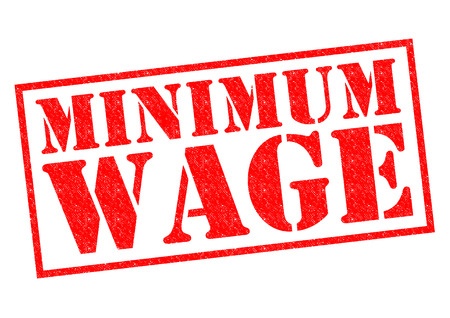Once again it’s time to take a look at the plight of minor
league ballplayers. The legislation that
the MLB owners successfully lobbied to get passed is certainly doing a good job
of holding down the compensation to the players in the minor league pipeline.
For reference, a minor league player’s salary starts out
capped at $1100 per month for the duration of the season. How many of you reading this column today
could meet your bills if for half the year you were earning less than $7000?
Now it does get somewhat better at the AAA level. The salary minimum set by the owners through
their lobbying efforts is $10,750 per year.
That’s a marginal improvement considering you’ve weeded out a great many
players from short season rookie leagues up until one step prior to the majors. For point of reference, someone earning the minimum wage of $7.25 per hour would earn over $15,000 for the year.
Now hockey may be a religion in Canada but in the USA it’s
almost an afterthought. For years there
wasn’t even major television coverage of the sport, yet the unionized minor
league hockey player minimum salary by contrast is $47,500 per year. Needless to say, a great many minor league baseball
players are now interested in forming a coalition or formal labor union in order
to fight for more equitable wages.
Now the MLBPA (the union representing major league
ballplayers) understands the situation but has taken the position that their job
is to set up players who ascend to the big leagues for as much financial
stability and success as possible. They
have yet to entertain any kind of formal proposal to unionize or assist the
minor league players. The fear is that
if they pressure the owners to help improve the minor leaguers’ compensation
then they will have to give up something they have fought to obtain for the
major leaguers.
It’s also a difficult negotiating position because the major
leaguers represent the top 600+ people in their profession with the best
skills. The minor leaguers, in
particular in the rookie ball level, usually don’t make it up the ladder and
there are tons of skilled players who would jump to have the chance they are
receiving, including the full population of independent league players.
The current agreement between the major league owners and
minor league players ends in 2020 at which time a new set of governing rules
should be expected. The problem right
now is that the owners could offer to increase salary while either decreasing
the number of minor league teams (cutting jobs) or decreasing the bonuses paid
when players initially sign. In other
words, they don’t want to dip into their own pockets at all.
The flip side is that the minor league players have been
reaching out to labor professionals in such organizations as the United
Steelworkers Union to get an education about what needs to be done to begin in
earnest the prospect of unionizing. Whether
they go at it on their own or affiliate with an existing union such as ones
covering ballpark suppliers, it’s a possibility that the owners must
acknowledge and prepare to address.
This story doesn’t yet get any better, but it needs to
remain top of mind for the benefit of all future ballplayers, many of whom live
five to an apartment in order to manage costs given what little they are paid.





6 comments:
Baseball's collective disgrace. Drastic changes are warranted.
The much higher minor league hockey salary comparison is also interesting.
One of these things is not like the other. Minor league hockey players are unionized.
On the other hand, hockey's and basketball's minors, to name two other sports, don't require a huge, multi-team operation to develop players over several years. So they are not strictly apples and apples in that respect, either.
My guess is that in hockey, and in the basketball developmental league, guys are in those leagues max 1 or 2 years.
And about 25 baseball players per year (draft and international) get good bonuses that (if you income average) helps bring up the average minor league player's wages per year. If you are not good enough for a decent bonus, you typically are gone in 1-3 years.
Still, they should pay all these guys 5 times as much, per season.
My most disliked rules are the 40 man and Super 2. Peter Alonso (and many other talented prospects throughout baseball) would have been on their MLB teams otherwise. It really is employment discrimination, whether codified in the players' agreement or not.
This should be dealt with immediately
Most people don't believe these players live 4-5 together in a 2 bedroom apartment in a bad neighborhood.
Pretty sad that a multi-billion dollar industry cannot figure this out.
A hard-salary cap and redistributing some funds would go a long way towards helping the issue, but the Major League Players Union would object.....perhaps they have forgotten where they came from?
Post a Comment